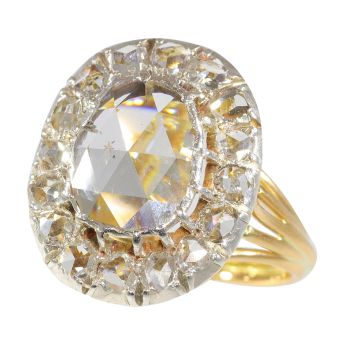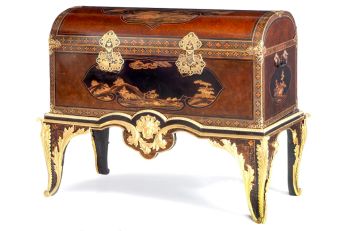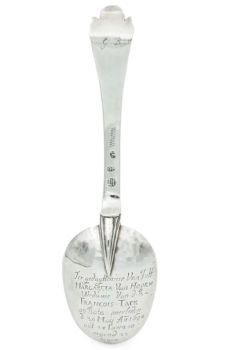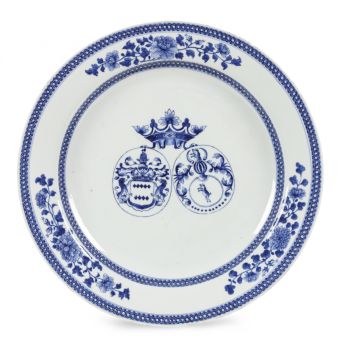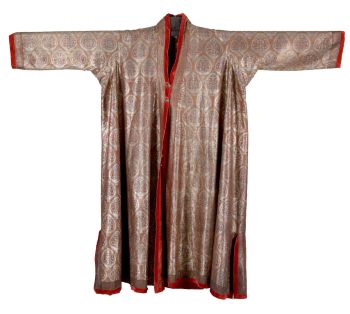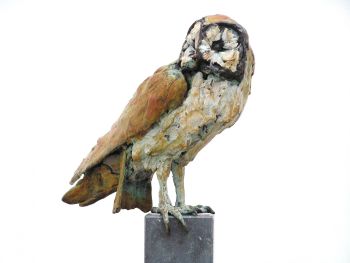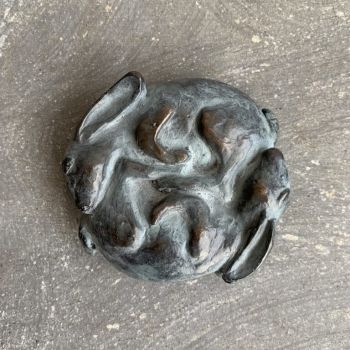A rare Dutch East India Company ‘VOC’ cannon 1764
Artiste Inconnu
BoisBronzeMétal
80 cm
Actuellement indisponible via Gallerease
Zebregs & Röell - Fine Art - Antiques
- Sur l'oeuvre d'art
Amsterdam, signed and by Pieter Seest, dated 1764 and with Amsterdam town mark
The bronze 1/2-pounder was made for 17-caliber length, and has a later wood gun carriage.
The cannon bears a large VOC monogram and the A for the East India Company Chamber of Amsterdam.
L. 80 cm, grams
Provenance:
Collection H.L.Visser, the Netherlands
Literature:
R. Roth, The Visser Collection - Arms of the Netherlands, in the collection of H.L. Visser, vol II, Zwolle, 1996, cat. no. C37, pp. 138-139 (ill.)
Before the start of the Eighty Years War in 1568, ordinance manufacture was in the Southern Netherlands, particularly in Mechelen, and the Northern Provinces only had a tradition of church bell casting, not of gun founding. However, thanks to migration out of the Southern Netherlands due to Spanish religious intolerance, a large section of the population that had embraced the Protestant faith, including many wealthy entrepreneurs and skilled craftsmen, fled to the North. Cut off from the traditional supply of ordinance, the North, with the help of immigrants from the South, developed their own ordinance.
Already by the early 17th century, Dutch arms and ammunition were major export products to the rest of Europe and abroad. This was fuelled by the expansion of maritime trade through the East and West India Companies, who needed to arm their vast shipping fleets. A religious refugee from the bishopric of Liège, Louis de Geer, together with Walloon iron workers, initiated copper and iron mining and established the Finspång gun foundry in Sweden. Together with Elias Trip, his brother-in-law, a prominent Dutch merchant of guns and financier of the foundry in Sweden, he made Holland the military arsenal of the world, exporting military equipment to most countries in Europe and further afield.
Most guns were made of iron because they were cheaper. However, since iron affects the compasses aboard ships, bronze guns were placed near the helm. - Sur l'artiste
Il peut arriver qu'un artiste ou un créateur soit inconnu.
Certaines œuvres ne doivent pas être déterminées par qui elles sont faites ou elles sont faites par (un groupe d') artisans. Les exemples sont des statues de l'Antiquité, des meubles, des miroirs ou des signatures qui ne sont pas claires ou lisibles, mais aussi certaines œuvres ne sont pas signées du tout.
Vous pouvez également trouver la description suivante :
•"Attribué à …." A leur avis probablement une oeuvre de l'artiste, au moins en partie
•« Atelier de …. ou « Atelier de » À leur avis, une œuvre exécutée dans l'atelier ou l'atelier de l'artiste, éventuellement sous sa direction
•« Cercle de… ». A leur avis une oeuvre de la période de l'artiste témoignant de son influence, étroitement associée à l'artiste mais pas forcément son élève
•« Style de … ». ou "Suiveur de ...." Selon eux, une œuvre exécutée dans le style de l'artiste mais pas nécessairement par un élève ; peut être contemporain ou presque contemporain
•« Manière de… ». A leur avis une oeuvre dans le style de l'artiste mais d'une date plus tardive
•"Après …." A leur avis une copie (quelle qu'en soit la date) d'une oeuvre de l'artiste
•« Signé… », « Daté… ». ou « Inscrit » À leur avis, l'œuvre a été signée/datée/inscrite par l'artiste. L'ajout d'un point d'interrogation indique un élément de doute
• "Avec signature ….", "Avec date ….", "Avec inscription …." ou "Porte signature/date/inscription" à leur avis la signature/date/inscription a été ajoutée par quelqu'un d'autre que l'artiste
Êtes-vous intéressé par l'achat de cette oeuvre?
Artwork details
Related artworks
- 1 - 4 / 12
Artista Desconhecido
Japanese transition-style lacquer coffer 1640 - 1650
Preço em pedidoZebregs & Röell - Fine Art - Antiques
1 - 4 / 24Artista Desconhecido
The bell of the VOC fortress in Jaffna, Sri Lanka1747
Preço em pedidoZebregs & Röell - Fine Art - Antiques
 Com curadoria de
Com curadoria deDanny Bree
1 - 4 / 13Artista Desconhecido
Japanese transition-style lacquer coffer 1640 - 1650
Preço em pedidoZebregs & Röell - Fine Art - Antiques
Cornelis Anthonisz Theunissen
MUITO RARO PRIMEIRO MAPA IMPRESSO DE AMESTERDÃO, UMA CIDADE EM ASCENSÃO1544
€ 175.000Inter-Antiquariaat Mefferdt & De Jonge
 Com curadoria de
Com curadoria deDanny Bree
Artista Desconhecido
The bell of the VOC fortress in Jaffna, Sri Lanka1747
Preço em pedidoZebregs & Röell - Fine Art - Antiques
 Com curadoria de
Com curadoria deDanny Bree
 Com curadoria de
Com curadoria deDanny Bree
1 - 4 / 24Joris August Verdonkschot
Degas Revisited - In Stock2000 - 2020
Preço em pedidoMorren Galleries Utrecht
1 - 4 / 24- 1 - 4 / 12




